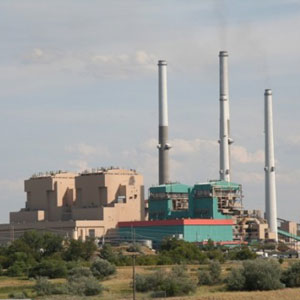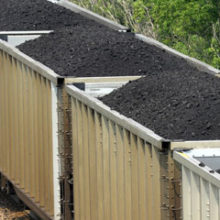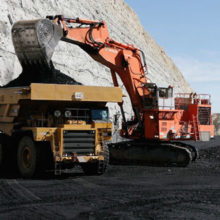Three Key Trends Facing Montana’s Energy Transition
These key points provide context that can help the state understand and respond to changes ahead—changes driven as much or more by market forces or by existing air quality regulations than by potential new carbon regulation. The earlier Montana begins to prepare for ongoing changes in the U.S. economy and energy sector, the more time the state will have to mitigate impacts and capture opportunities from those changes.
First, the coal industry is declining for reasons that precede and extend beyond potential federal carbon regulations. Coal mining and coal utilization in power generation are declining because of cheaper alternatives (natural gas and increasingly renewable energy sources), existing regulations limiting mercury and other air pollutants, changing consumer demands, and because of declines in export demand. Financial markets and analysts view declines in coal production and utilization as part of a permanent structural shift in U.S. energy markets.
Second, Montana’s economy has grown and diversified, adapting to and thriving in today’s economy. Education, access to markets, and quality of life add to the state’s natural resource sectors and are the primary drivers of economic growth. The state as a whole is less dependent on coal mining today than at any time since the 1970s when coal mining and coal-fired electricity first ramped-up in the state.
Third, natural resource sectors, including coal mining and coal-fired electricity generation, remain important in Montana’s rural communities where these activities are located. Declines in coal will be felt acutely in three counties: Rosebud, Big Horn, and Musselshell, and to a lesser extent, Richland County. Local employment, income, and tax revenue will be difficult to replace if and when the Colstrip generating facility closes partially or entirely and when coal production from Montana’s mines slows.
Discussion, Context, and Trends
Montana’s economy is growing and diversifying, driven by an increase in high-wage services jobs and growing investment-related income located in Montana’s cities. Seven Montana counties today host two-thirds of all the state’s jobs. As a result, Montana as a whole is less dependent on coal mining today than at any time since significant coal mining and coal-fired electricity first ramped-up in the 1970s.
Rural counties without easy access to markets or an educated labor force will not compete as successfully for jobs and income that are boosting the state’s cities. Rural communities remain more dependent on natural resources sectors, including coal that is of immense importance in three Montana counties where coal-related activities are concentrated. Dependence on natural resources sectors exposes rural counties to price and market volatility and uncertainty with regard to changing consumer demands and regulations largely outside of Montana’s full control.
The profound shift in how and where our economies generate value, jobs, and income represents an opportunity for Montana as a whole, but challenges for parts of the state. While the state overall is likely to experience relatively small impacts from a smaller coal industry in Montana, coal-dependent communities in Eastern Montana are likely to feel the acute effects of job losses and declining tax revenue in the coming decades.
Context related to Montana’s changing economy and current trends in the coal sector can help the state understand and respond to changes ahead—changes driven as much or more by market forces or by existing air quality regulations than by potential new carbon regulation. The sooner Montana begins to prepare for ongoing changes in the U.S. economy and energy sector, the more time the state will have to mitigate impacts and capture opportunities from those changes.
Key Questions for Montana’s Energy Future
How Will Montana Replace Retired Coal-Fired Energy?
Washington and Oregon states each are moving forward with legislation that would eliminate coal-fired power from their energy portfolios. Montana’s position as an energy exporting state offers unique challenges and opportunities. If (or when) Colstrip’s capacity is ramped down or retired entirely, can Montana replace the lost power generation capacity with renewable sources of energy that can be exported to consumers in Washington and Oregon, and maintain relatively low rates for Montana’s consumers?
What Changes May be Required to State and Local Coal Fiscal Policy?
From the statewide perspective, the continued growth in Montana’s economy, the relatively small direct contribution from annual coal revenue, and the increasing income from the Coal Trust make the state resilient to changes in the coal sector. Proposals for increased federal royalty rates could actually increase coal revenue to the state even as production declines. Higher royalty rates would increase revenue per-ton, and roughly half of federal royalties earned in Montana are shared with the state.
By comparison, lower property tax valuations in counties that host coal mining and coal-fired generation will not be so easily replaced. New investments in energy development could offset local property taxes, but most likely these will be located in different jurisdictions (providing new benefits to counties that host these activities, but not offsetting losses in coal-dependent counties). The state should consider changes to fiscal policy, including revisiting tax rates, allocating additional revenue to the Coal Trust (for example, half of federal royalty revenue), and allocating additional revenue to community impact and transition funds.
What Economic Development and Community Transition Strategies Should be Considered?
Capturing new opportunities in renewable energy can be an economic development strategy for Eastern Montana. However the location of these jobs, the required skills, and other factors mean that coal-dependent communities and workers may not be well-positioned to capture these opportunities.
An economic development and community transition plan should include other options for Colstrip, including carbon capture technology, biomass and other smaller-scale energy projects, in addition to other economic development strategies.
Montana should work with coal communities to develop leadership and community needs assessments to position the state to capture funding available for communities. For example, $55 million was committed by TransAlta Corporation for energy efficiency, community and economic development, and education and worker retraining programs in Washington as part of the Centralia coal-fired plant closure. Federal funding is also available, including the POWER+ Plan, to provide new resources for economic diversification, job creation, job training and other employment services for coal-dependent communities, health care and retirement security for workers, accelerated funds for mine reclamation, and new tax incentives to support continued technology development and deployment of carbon capture, utilization and sequestration technologies.
 The three key trends listed above pose a number of questions for Montana concerning coal’s role in its economy, fiscal policy, and local economic development.
The three key trends listed above pose a number of questions for Montana concerning coal’s role in its economy, fiscal policy, and local economic development.


